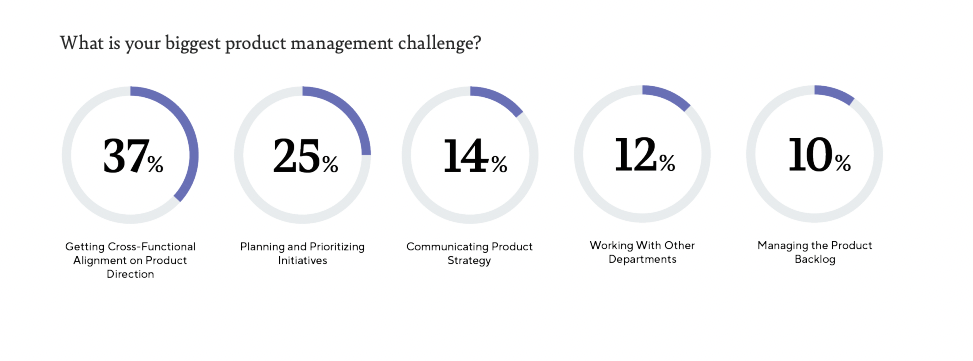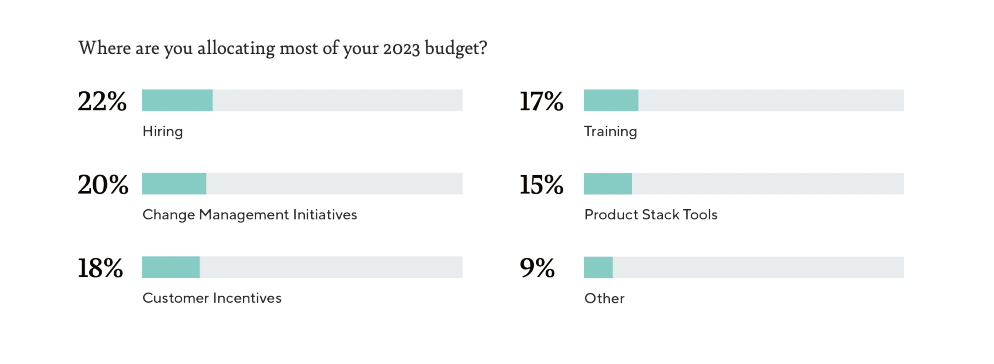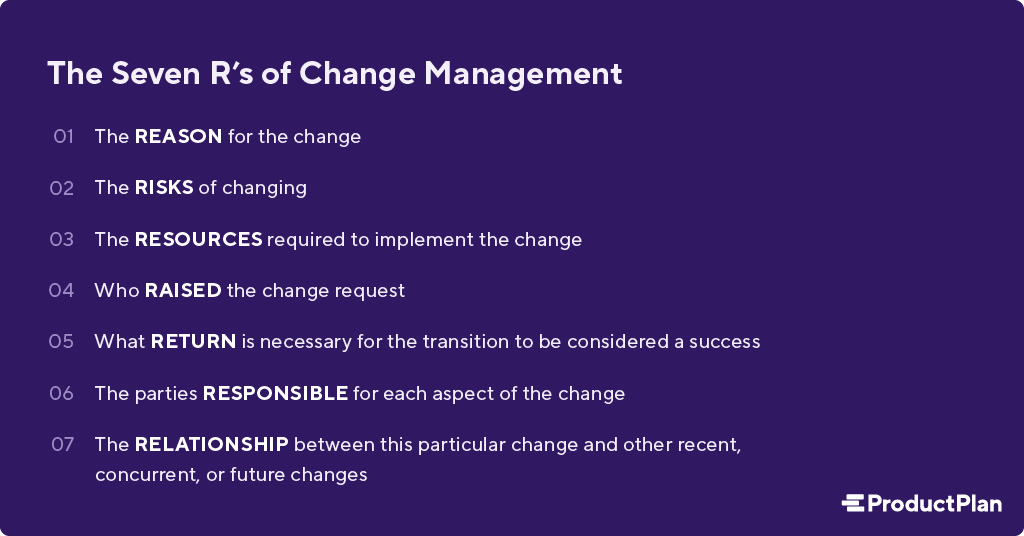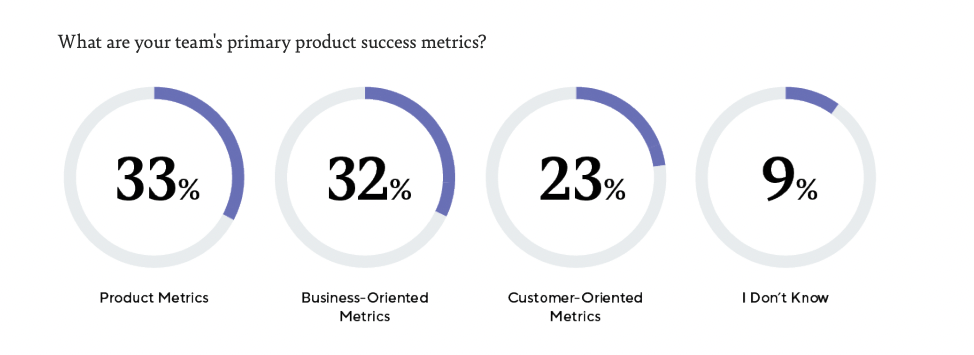I have been fortunate to have joined the ProductPlan team as the SVP of Product Management in the latter half of 2022. As I experienced the whirlwind of onboarding and meeting my wonderful colleagues, I also spent much time thinking about the future of product management and the space at large.
We have seen the rise of product operations, the Great Resignation, a renewed focus on digital transformation, and challenging economic uncertainty.
However, throughout this period of monumental change, the product community continued to advance the field with shared knowledge and support, which allowed us to become more connected, even while many of us were still remote.
Part of our mission at ProductPlan is to support the product community with insightful, data-packed content that provides actionable insights and serves as a valuable resource for product leaders and teams alike. So, I am honored to share some highlights from The 2023 State of Product Management Report.
How the state of product management report works
Our eighth annual report explores significant trends and data-packed findings on the state of our industry. We surveyed over 1,500 product professionals last October. Our largest cohorts of respondents were “product managers,” “product owners,” and “directors of product.”
A majority of respondents, 34 percent, had between 2-5 years of experience, with 33 percent reporting that they worked at an organization of 101-1,000 employees. Furthermore, most respondents reported working in “information technology and services,” while “computer software” came in at a close second.
This year’s report focuses on how product teams support the entire product lifecycle from ideation to launch. These findings fill me with excitement about the future of product management and the multitude of possibilities to push our field forward.
Keep reading to learn key takeaways from the report and how it will impact product management organizations in the year ahead.
Cross-functional alignment is one of product management’s most significant challenges for 2023
Across various industries, product leaders often need help aligning their product strategy with organizational goals. Usually, this is the result of communication breakdowns amongst various stakeholders.
According to our 2023 State of Product Management Report, 37 percent of those surveyed reported that “getting cross-functional alignment on product direction” was their biggest challenge.

Struggling to get stakeholders on the same page is nothing new, but it becomes more challenging as companies look to scale. Ineffective communication can have devastating effects, including lackluster product launches and breaking trust among product teams and executive stakeholders. One way to look at this is as an opportunity to establish better communication strategies with all departments—executive leadership, customer success, marketing, and sales. Influential product leaders engage stakeholders and ensure conversations remain productive and informative.
Best practice: use a product roadmap as a single source of truth for communicating with stakeholders
A product roadmap is ideal for capturing important initiatives that product managers can share with stakeholders throughout the product lifecycle. The right roadmapping software can provide product teams with the ability to communicate roadmap changes to stakeholders, allowing them to understand changes to the roadmap at different points in time.
A quick look back at the challenges product organizations faced has changed since 2022
As we look ahead to the new year, we must reflect on how product management trends have changed. According to our 2022 State of Product Management Report, 22 percent of respondents reported that “planning and prioritizing initiatives” was their most significant challenge. This challenge is likely the result of organizations readjusting after weathering the worst of the pandemic. We also found that 37 percent of respondents reported that they would allocate a significant portion of their budget to hiring product managers.
Tightening budgets requires product organizations to scale more efficiently
When looking at budgets for 2023 and comparing them to our 2022 report, hiring remains the primary bucket for budget allocation at 22 percent. Despite recent layoffs and the Great Resignation, the product management field continues its upward trajectory regarding new hires.
In fact, according to Linkedin, 43 percent of organizations surveyed reported the need to hire more product managers.

Though hiring was top-of-mind for our respondents, budget allocation to “change management initiatives” came in at a close second at 20 percent. Product leaders know that to execute change management effectively, they must first gain alignment amongst their team and stakeholders.
Best practice: The seven R’s of change management
Successful change management requires significant planning, strategy, and communication with all key stakeholders. To start, product leaders must focus on understanding the seven R’s of change management:
- The REASON for the change
- The RISKS of changing
- The RESOURCES required to implement the change
- Who RAISED the change request
- What RETURN is necessary for the transition to be considered a success
- The parties RESPONSIBLE for each aspect of the change
- The RELATIONSHIP between this particular change and other recent, concurrent, or future changes

Product teams are focusing on using product metrics to measure success in addition to business metrics
Each product team is uniquely positioned to identify how to measure product success. According to our report, 33 percent of respondents concluded that their team’s primary success metric was product metrics.

Last year, our report ascertained that product managers who used “product metrics” as their primary success metric said that product experience had the most significant impact on customer acquisition.
Additionally, 32 percent of respondents reported that “business metrics” defined how they measured success.
Best practice: product metrics inform the success of the product vision
When done correctly, product and business metrics can work together to help product teams understand where they are at accomplishing the product vision. In essence, the product vision serves as a north star that helps the ever-evolving product strategy and tactics remain focused. Everything the product team accomplishes aligns with the product strategy and using the product and business-oriented metrics can inform teams of their impact.
Despite the challenges ahead, the future looks bright for product management
When product teams align their product strategy with organizational goals, the value they provide their customer grows exponentially. Moreover, when product teams own the product lifecycle, product market success tends to follow, which challenges the efficacy of the top-down approach.
I look forward to you reading our 2023 State of Product Management Report. My colleagues and I hope you and your product team benefit from the many insights found within the report.
Feel free to share with your colleagues and friends!

